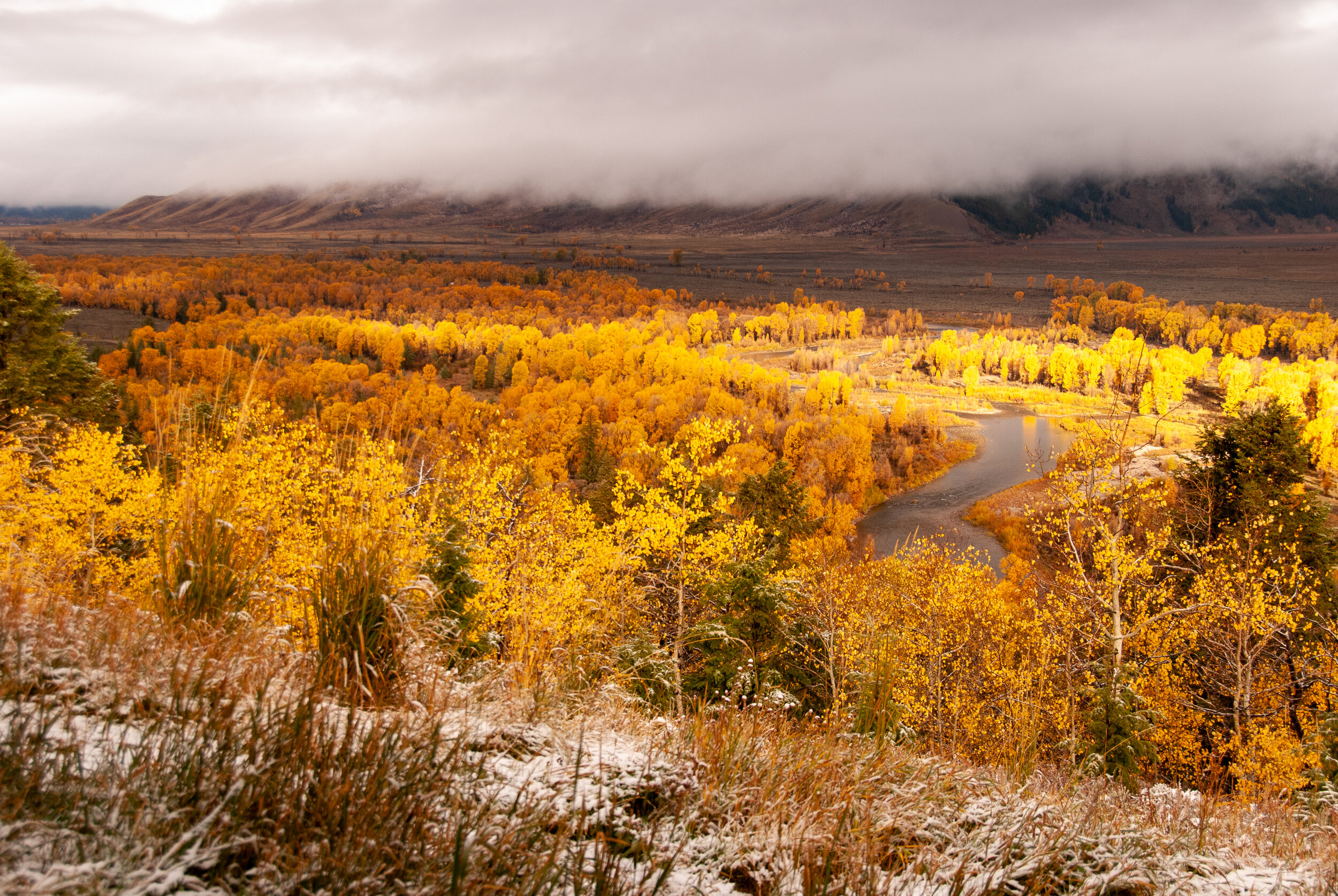
Mentorship Program
Training young wildlife biologists through our ongoing field projects is an effective method of developing projects and nurturing young scientists who will soon be taking leadership roles in our communities. Craighead Beringia South has student internship and graduate fellowship programs framed around its ongoing field research.
Programs
Student Internship
Beringia South employs aspiring young wildlife biologists as field technicians on research projects. In collaboration with Jackson Hole High School, we are sponsoring high school students to participate in our field studies throughout the summer.
Graduate Fellowship
Craighead Beringia South occasionally awards graduate fellowships to biologists that have been working on existing field projects for several years. We do not provide unsolicited fellowships. The student is given key responsibility over some aspect of a Beringia South research project, and senior staff members then perform the role of field mentor and academic advisor, usually serving on the student’s graduate committee. We guide the student through the formal steps of developing a research proposal, conducting the scientific inquiry, analyzing and interpreting data, and finally publishing the results. This is only part of their education. Just as important is our considerable effort in cultivating the fellows’ social skills of communicating with the public and building productive relationships with cooperating state and federal agencies. We fuel the development of their mental and ethical growth by challenge them to accept responsibility, cultivate teamwork and leadership skills, and by example, encourage a strong work ethic and an acceptance of diverse opinions and beliefs.
Educational Philosophy
Beringia South encourages and supports all forms of education, advocacy, and research that increase public awareness of environmental issues and builds public and a political consensus for a change in how humans relate to and use the planets’ resources. Furthermore, it believes that all scientists have a responsibility to make their scientific findings accessible and understandable to the general public. Ecological research has been and will continue to be the intellectual persuasive force for the conservation movement, providing the factual and conceptual stimulus for environmental education and advocacy. When programs of education and advocacy, inspired by the discoveries of science, can demonstrate clearly the social costs of environmentally destructive behavior, broad shifts in social attitudes and behaviors are possible. Participation in scientific formats as well as public education and policy debate are regarded as obligatory outcomes of scientific inquiry.
Past Graduate Students and Interns - Master and Doctorate Dissertations:
Effects of wolf and grizzly bear recovery on cougars in a multi-use system. (2021). Jen Feltner. University of Montana.
Comparing conventional and noninvasive monitoring techniques for assessing cougar population size in the southern Greater Yellowstone Ecosystem. (2016). Alexander, Pete D. Utah State University.
Low neutral genetic diversity in isolated Greater Sage-Grouse (Centrocercus urophasianus) populations in northwest Wyoming. (2014). Schulwitz, S. The Condor, 116(4), 560-573.
Identifying environmental factors influencing golden eagle presence and reproductive success. (2013). Crandall, Ross. University of Montana.
Modeling of Critical Habitats of Greater Sage-Grouse in Jackson Hole. (2014). Haynam, Trapper. University of Montana.
Golden Eagle Nesting Ecology and Habitat Use. (2013). Crandall, Ross. University of Montana.
Puma Dispersal Ecology in the Central Rocky Mountains. (2011). Newby, Jesse. University of Montana.
Blood Selenium Concentration in Ravens, Bald Eagles, and Mallard Ducks. (2010). Trapper Haynam. BS Thesis, University of Montana, Missoula, MT.
An internship in conservation biology with Craighead Beringia South. (2010). Glover, Alicia. Miami University.
Common raven activity in relation to land use in Western Wyoming: Implications for greater sage-grouse reproduction success. (2010). Bui, Thuy-Vy D., Marzluff, J. M., Bedrosian, B. The Condor, 000(0).
Investigating cougar predation habits in the Southern Greater Yellowstone Ecosystem. (2010). Bartnick, T. D. University of Wisconsin Madison.
Lead Ingestion by Scavenging Mammalian Carnivores in the Yellowstone Ecosystem. (2010). Tom Rogers - M.S. Degree from the University of Montana.
Effects of Predation and Recommendations for Management on Two Wyoming Populations of Greater Sage-grouse. (2009). Bui, Vivian. University of Washington. Bui - M.S. Degree from University of Washington (2009)
Characteristics of wolf and cougar kill sites in the Southern Yellowstone Ecosystem. (2006). Woodruff, Susannah. Prescott College.
Cougar ecology and cougar-wolf interactions in the Southern Greater Yellowstone Ecosystem. (2005). Jaffe, Rosemary, Quigley, Howard, Craighead, Derek. Teton Cougar Project 2005 Preliminary Annual Report.
Nesting and Post-fledging Ecology of the Common Raven in Grand Teton National Park. (2005). Bedrosian, Bryan. Arkansas State University.
Influences of elk management on the common raven population in Jackson Hole, Wyoming. (2002). White, Crow. The University of Montana, Missoula, MT.

